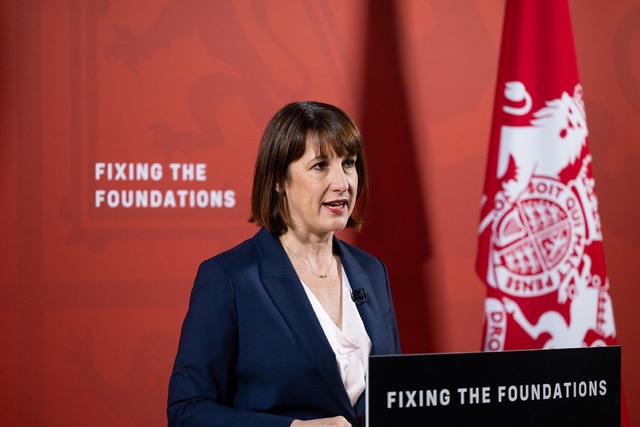
Rachel Reeves, Chancellor
Chancellor Rachel Reeves is likely to take a close look at pension tax relief as she looks at ways to raise money for the Treasury in her first Budget next month, consultants LCP have warned.
The firm has published its analysis today in a new paper and it suggests the Chancellor could be considering a multi-billion pound hit on employer pension contributions.
It points out that with the Labour manifesto pledge not to raise rates of income tax, National Insurance, VAT and corporation tax, the Chancellor is likely to be taking a keen interest in pension tax relief – with a net annual cost estimated by the Treasury at around £48bn.
The paper argues that some changes, such as introducing ‘flat rate’ tax relief – though potentially lucrative – are highly unlikely politically. That is especially true because a significant group of beneficiaries of higher rate relief are mid-ranking and senior public sector workers, a group which the government is unlikely to want to alienate.
However, there are other aspects of the system where the Chancellor may judge that there is the potential to raise significant additional revenue, including levying NI on employer pension contributions, putting a cap on tax-free lump sums or reducing the tax privileges of pensions on death.
The analysis suggests the most likely move is for employer NI to be levied on employer pension contributions.
At present, where a worker is paid a wage, that wage is subject to both employee NI contributions (now at 8%) and employer contributions (at 13.8%). But if that same remuneration is paid into a pension, no NI is levied on either the worker or the firm.
Because of this difference, in many workplaces salary sacrifice is in place. The Government estimates that the cost of not charging NI on the pension contributions made by employers is around £23.8bn.
Steve Webb, partner at LCP said: “The Chancellor will be looking for relatively simple changes which can be introduced quickly and will raise large sums with least voter anger. Changes to taxes on business may fall within that category, and the large cost of exempting employer pension contributions from National Insurance contributions will not have escaped the Chancellor’s attention.”
Another option is a cap on tax-free lump sums.
In most pension arrangements it is possible to take part of the pension at retirement in the form of a tax-free lump sum with the current lifetime limit £268,275. The Chancellor might consider capping this at a much lower level – such as the £100,000 which has been suggested by the Fabian Society.
LCP modelling suggests that many public sector workers with long service in their public sector pension scheme may well be caught by a cap at this level.
Alasdair Mayes, partner at LCP said: “Capping tax-free lump sums sounds simple in theory but would be complex in practice. Complex transitional rules would need to be designed for those who would otherwise be unfairly affected by the change, and this could mean it would take months or years to implement.”
A third option is reducing the tax privileges of pensions on death.
An anomaly which the Chancellor might look at is the rules which allow people to inherit a pension pot free of income tax where the person who died was under the age of 75. The distinction based on the age at death could be removed but is expected to raise relatively little revenue.
Tim Camfield, senior consultant at LCP said: “Pension pots currently offer significant tax benefits upon death, generally being shielded from inheritance tax. While it can be argued that reform could encourage the use of pensions for income to the saver and their spouse rather than inheritance, any changes must be weighed carefully to avoid unintended consequences such as penalising unmarried partners.”
